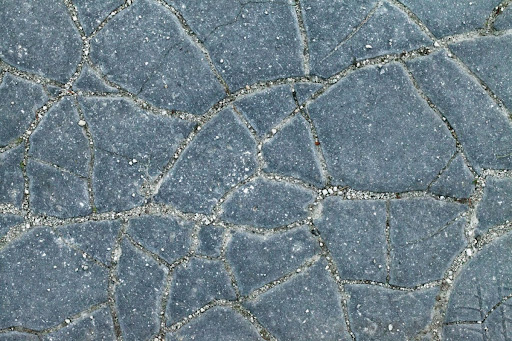- Unmasking Alligator Cracking: The Hidden Enemy of Asphalt Pavement
- Are Asphalt and Sealcoating Environmentally Friendly?
- Should I Repair My Potholes in Spring?
- 5 Important Questions You Should Ask Your Seal Coating Company
- How Does Snow Cause Potholes on Asphalt Roads?
- How Can Driveway Paving Add Value to Your Home?
- How Does Sealcoating Protect Driveways From Damage?
Unmasking Alligator Cracking: The Hidden Enemy of Asphalt Pavement

Asphalt has a hidden enemy that can compromise its integrity and longevity — alligator cracking. Aptly named for its resemblance to the rough, scaly skin of an alligator, this form of asphalt distress can lead to serious pavement problems if not promptly addressed and is typically found on commercial properties. Let's unmask this elusive foe, delve into its causes, explore its impact, and, most importantly, reveal effective strategies for prevention and repair.
What Is Alligator Cracking?
Alligator cracking, also known as fatigue cracking, is a common type of asphalt pavement distress that resembles the rough, scaly skin of an alligator — hence the name. It typically begins as a series of longitudinal cracks in the asphalt, which gradually evolves into interconnected cracks, forming a pattern similar to an alligator's hide. Alligator cracking is more than just a surface-level issue; it indicates deeper, underlying problems with the pavement structure. If left untreated, water can seep through these cracks, causing further damage to the sub-base and leading to more severe pavement failures like potholes or total pavement collapse.
The Causes Behind Alligator Cracking
In the world of asphalt pavements, alligator cracking is a formidable enemy, often signaling deeper structural issues that require immediate attention. But what exactly causes this distinctive pattern of distress? Just as a doctor would trace the symptoms to diagnose an illness, we must delve beneath the surface of our pavements to understand the root causes of alligator cracking and how we can find a solution.
- Inadequate Pavement Thickness: If the asphalt pavement isn't thick enough to support the load it carries, it can lead to fatigue and, eventually, alligator cracking. This is especially common in parking lots or roads with heavy vehicle traffic.
- Poor Drainage: Water is one of the most damaging elements to asphalt pavement. Poor drainage can result in water seeping into the sub-grade layers, weakening them and leading to structural failure manifested as alligator cracking.
- Substandard Base or Subgrade: The quality of the base or subgrade is critical in maintaining the integrity of the asphalt pavement. An improperly constructed or weak base can't provide the necessary support, causing the asphalt to crack under stress.
- Overloading: Asphalt pavements are designed to handle specific load limits. When vehicles heavier than the design load consistently use the pavement, it can cause premature wear and tear, leading to alligator cracking.
- Aging and Weathering: Over time, exposure to the elements causes the asphalt binder to oxidize and become brittle, leading to surface cracks that can eventually develop into alligator cracks.
- Poor Construction: Faulty construction practices, such as improper compaction or using low-quality materials, can also lead to the development of alligator cracks.
The Consequences of Ignoring Alligator Cracks
Ignoring alligator cracks in your asphalt pavement can have several serious consequences. These cracks are not merely cosmetic issues but are indicative of deeper structural faults. If left untreated, water can infiltrate these cracks, causing further damage to the sub-grade layers. This can lead to extensive and costly repairs as the pavement may need to be removed entirely and replaced. Furthermore, the deteriorated surface can become a safety hazard. The uneven surface can lead to tripping incidents for pedestrians and can damage vehicles that pass over it. In commercial settings, this could also negatively impact your business's impression on customers or clients. Thus, timely intervention in the form of professional assessment and asphalt repair is crucial to mitigate these risks and prolong the lifespan of your pavement.
Preventive Measures: How to Avoid Alligator Cracking
Preventing alligator cracking, much like any problem, is often more cost-effective than dealing with it after it has occurred. Several preventative measures can be taken to avoid this common pavement issue. Firstly, ensure that the asphalt pavement is adequately designed and constructed. This includes using high-quality materials and providing adequate thickness to withstand the intended load. Proper drainage should also be installed to prevent water from seeping into the sub-grade layers. Regular sealcoating can also help protect the asphalt from water, UV rays, and other damaging elements. Additionally, routine maintenance and inspections should be carried out to identify and address minor issues before they develop into major concerns. Overloading should be avoided, and if heavy vehicle traffic is expected, the pavement should be designed accordingly.
Repair Your Asphalt With Superior Seal Coating
Whether you're dealing with existing cracks or are keen on preventing potential damage, Superior Seal Coating is here to help. Don't let alligator cracking compromise the integrity of your asphalt pavement. Our team of seasoned professionals is ready to help you navigate these challenges. We'll work together to create a durable, long-lasting asphalt paving solution that withstands time and traffic. Take a stand against alligator cracking today by speaking directly with the Superior Seal Coating team.